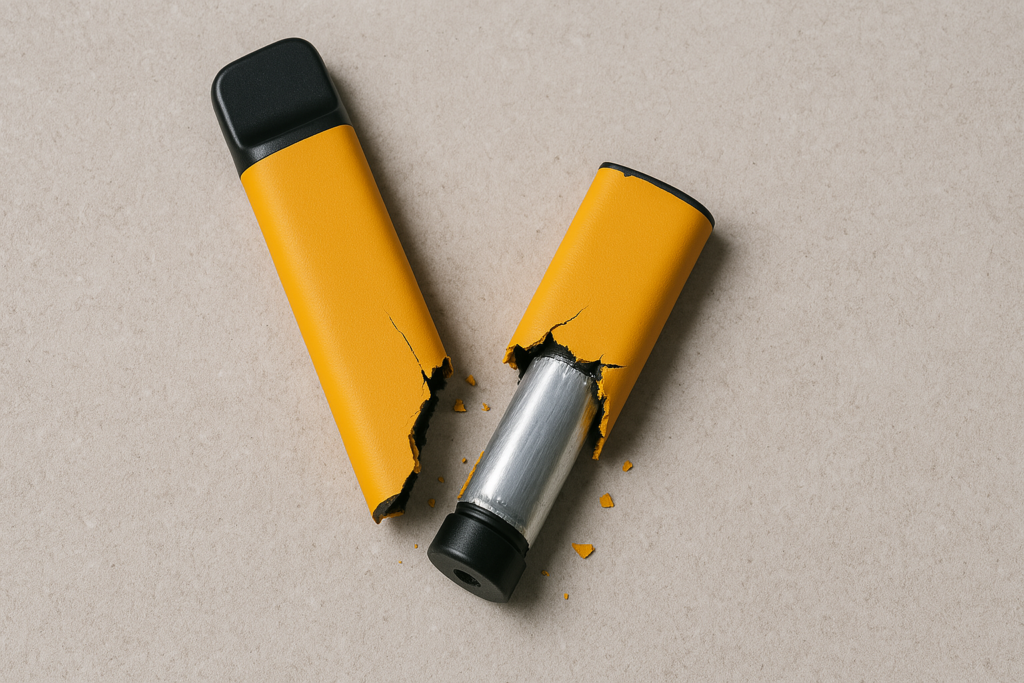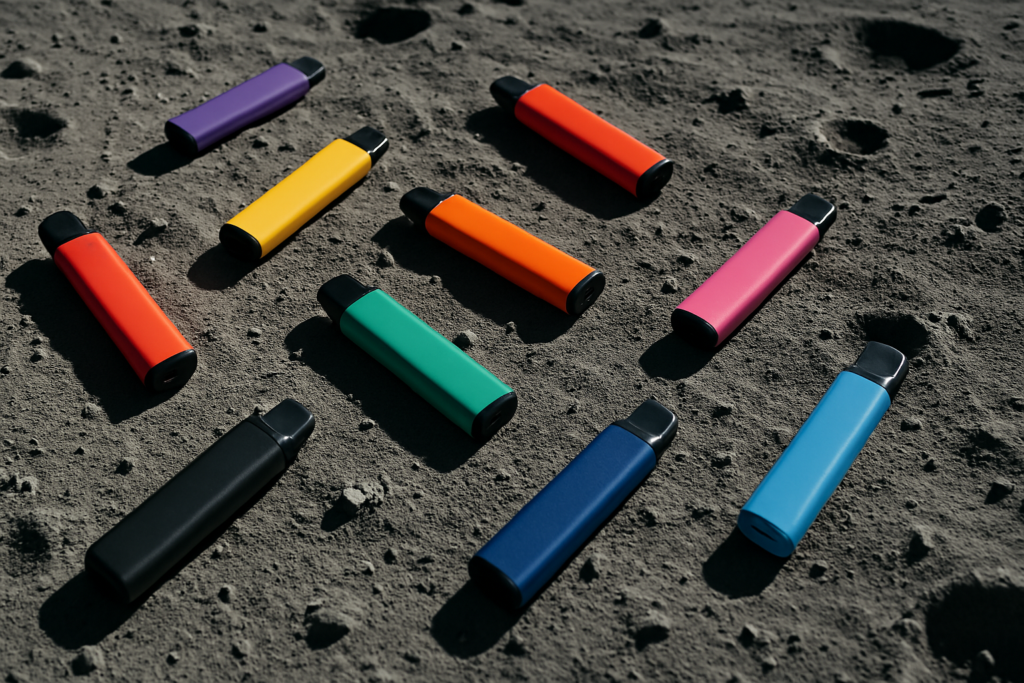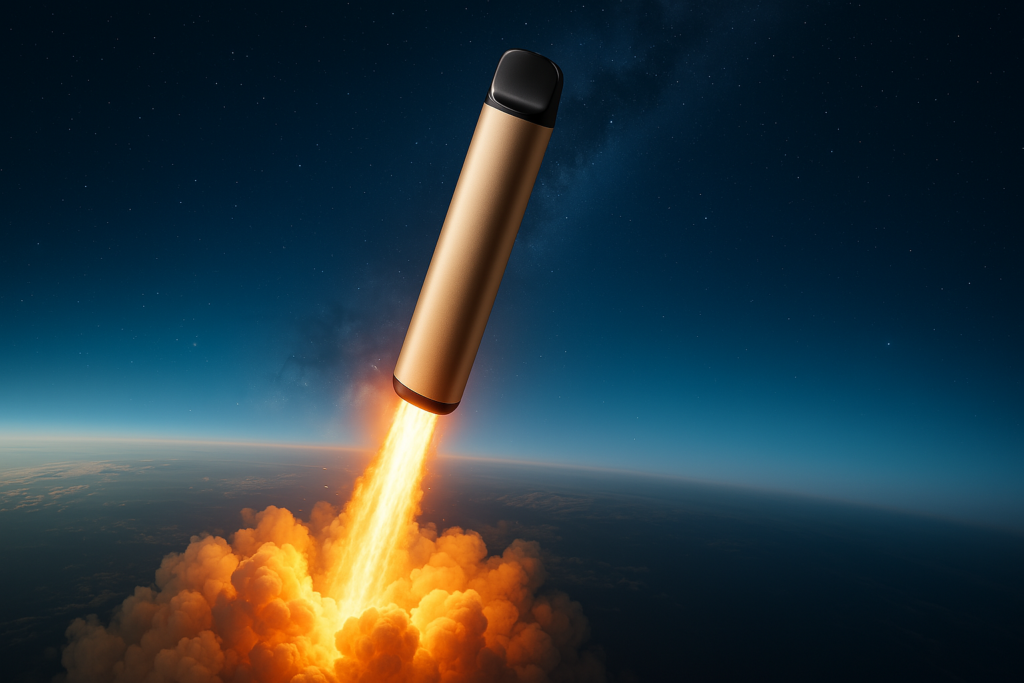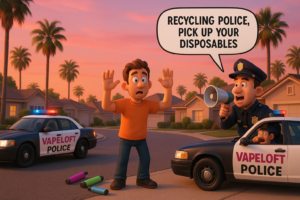In a unanimous decision that has the vaping industry collectively holding its breath, the U.S. Supreme Court just delivered a major win for the FDA’s authority to regulate those fruity, desserty vape flavors we’ve all seen (or tried). Let’s break down what this means for the future of vape flavors and why your “Peachy Strawberry” might be on the endangered species list.
The Flavor Crackdown: What Just Happened?
On April 2, 2025, the Supreme Court unanimously sided with the FDA in its ongoing battle against flavored e-cigarettes. The case centered around Triton Distribution, whose applications for marketing products with names like “Jimmy The Juice Man in Peachy Strawberry” and “Suicide Bunny Mother’s Milk and Cookies” were rejected faster than that friend who always says they’ll “just take one puff.”
The Public Health Balancing Act
Here’s where things get complicated (and interesting). To get FDA approval, vape manufacturers need to prove their products offer a “net public health benefit.” That’s fancy regulatory language for:
- ✅ Helps adult smokers quit traditional cigarettes
- ❌ Doesn’t entice non-smoking teens to start vaping
It’s like trying to create a dessert that’s irresistible to adults but completely unappealing to kids. Good luck with that marketing challenge!
What This Means For Your Vape Flavor Collection
While the Supreme Court’s decision is a major win for anti-vaping advocates, this saga isn’t over. Justice Samuel Alito, writing for the Court, acknowledged that while the FDA didn’t consider Triton’s marketing plan (which they probably should have), this oversight didn’t violate federal law.
The case has been sent back to the lower court to determine if this was a big enough oopsie to warrant a decision in Triton’s favor. So your favorite fruity vape flavors are still in regulatory limbo.
The Political Vape-scape
Adding another layer of complexity to this vapor cloud is the political climate. President Trump has previously expressed support for the vaping industry, even promising to “save” vaping. This stance could potentially shift the FDA’s approach to regulating e-cigarette products.
Meanwhile, the FDA itself is experiencing significant internal changes, with recent cuts to the federal health workforce affecting the agency’s ability to effectively regulate health products. It’s like trying to referee a game while half the officials are being sent home.
What Happens Next?
The vaping industry isn’t giving up without a fight. Eric Heyer, Triton’s attorney, expressed disappointment with the ruling but affirmed the company’s belief in their products’ harm reduction potential and their intention to continue litigation.
For vapers, this means continued uncertainty around flavored products. For now, tobacco and menthol-flavored e-cigarettes that have demonstrated smoking cessation benefits remain available, but those fruity, dessert-inspired flavors face an uphill battle.
The Bottom Line
The Environmental Impact: What No One’s Talking About 🌎
Let’s be real—while everyone’s busy debating fruity flavors and FDA red tape, there’s a much bigger picture getting zero airtime. This regulatory drama isn’t just about taste or teen trends—it’s about an overlooked tradeoff between public health and environmental harm that should be front and center.
The Science Behind the Smoke 🔬
Here’s what we need to get straight: vaping and smoking are two fundamentally different processes. Vapes heat liquid to create aerosol. Cigarettes? They’re tiny chemical fire pits that users inhale by choice.
Light up a cigarette, and you’re not just getting a nicotine fix—you’re releasing a toxic cocktail of over 7,000 chemicals into your lungs and the air we all breathe, including:
- Carbon monoxide (same stuff in car exhaust)
- Formaldehyde (aka the corpse preservative)
- Hydrogen cyanide (used in chemical weapons—seriously)
- Benzene (yep, that’s the stuff in gasoline)
The Climate Connection Nobody Mentions 🌡️
Here’s the thing: cigarettes don’t just wreck lungs—they mess with the planet too. That glowing ember is a low-key pollution engine, pumping out fine particulate matter (PM2.5) that contributes to:
- Urban air pollution in U.S. cities
- Breathing issues for kids, seniors, and people with asthma
- Climate change, via heat-trapping particles in the air
And let’s not forget black carbon—a potent byproduct of burning tobacco that settles in soil, water, and ice, while soaking up solar radiation like a sponge. While cigarettes aren’t the biggest source of black carbon globally, they do contribute—and with over 15 billion sold daily, the impact stacks up. Every puff may be small, but the pollution adds up.
The Policy Paradox 🤔
Now here’s the kicker: if the FDA says it’s all about protecting public health, why push rules that could potentially drive adults back to cigarettes?
By zeroing in on flavored vapes without fully weighing the comparative harm, we risk creating a policy that does the opposite of what it’s supposed to do.
Think about it:
- Secondhand smoke? Packed with carcinogens. Vape aerosol? Far fewer toxins, though not completely harmless.
- Cigarette butts? We toss 4.5 trillion of them a year. They leach toxins, pollute oceans, and stick around for up to a decade.
- Cigarettes are still the norm—while vape products (especially open systems) get hit with bans, taxes, and restrictions, despite being potentially cleaner alternatives.
And for the record—vapes aren’t perfect either. Disposable devices with lithium batteries and plastic parts create a different kind of environmental mess. But when it comes to air pollution, chemical output, and fire risk? Cigarettes are still the heavy hitters.
What This Really Means For Smokers
If policies restrict access to less harmful options, we could end up with:
- More people lighting up again
- A rise in cancer and chronic diseases
- More pollution, more waste, and higher healthcare costs for everyone
Pro tip: next time you hear about flavor bans, don’t just follow the headlines—follow the health data and the pollution trail. The answers might not be what you expect.
Because while the Supreme Court gets caught up in legalese, the bigger question still stands: are we making public health decisions based on real science, or reacting to another moral panic?
Your “Peachy Strawberry” might be disappearing—but the long-term cost could be a whole lot worse than losing your favorite flavor. 💨
Important Safety Disclaimer: This article is provided for informational purposes only. Always follow manufacturer instructions, local regulations, and age restrictions regarding vaping products. Vaping products contain nicotine, which is addictive and may be harmful to health. Products are intended for adult use only (21+ in most regions). Consult healthcare professionals before using any nicotine products.





